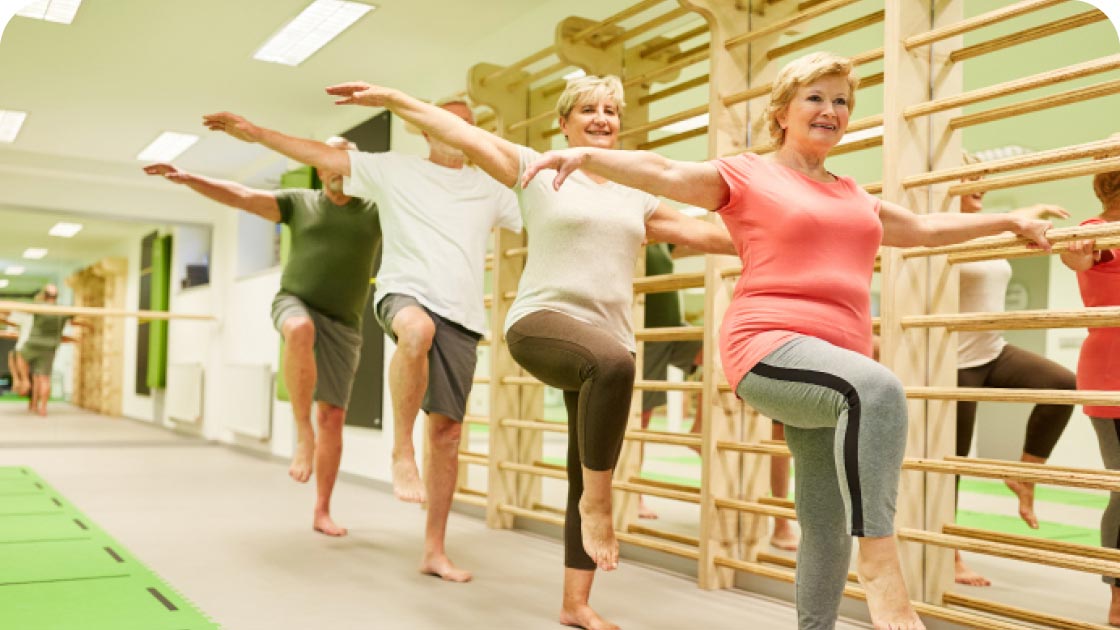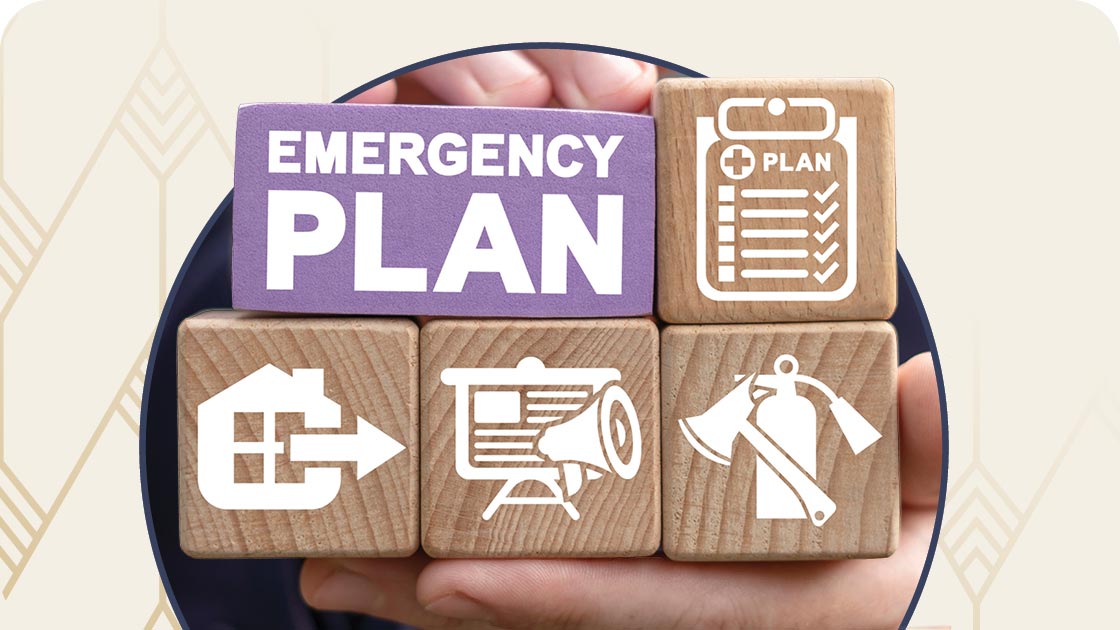Staying active and independent is what we all want, at every age. But an injury from a fall can jeopardize our health and happiness. Every year, over 3 million older adults are treated in emergency departments for injuries because of a fall. Before it happens to you or your loved one, put fall prevention strategies into action.
Although our risk increases as we age, there are plenty of practical fall safety tips that can save you from painful and costly broken bones, fractures, head injuries and strains. The suggestions in this blog will get you started in developing a fall prevention plan that works for you.
Statement of Fairness: Considering senior living options for yourself or a loved one? We’re here to help at every step. And even though we specialize in independent living communities, our goal is for YOU to find your best path to gracious retirement living, and part of how we achieve that is by providing reliable information on all types of senior living, not just the ones we offer. When our offerings serve as useful illustrations to a specific topic, you can find that information in the attached sidebar.
These fall safety tips will help you steer clear of the most common causes: body weakness, home hazards, medical conditions, drugs both prescribed and over-the-counter, and unhealthy habits.
Fall Safety Tip #1: Exercise for Balance and Strength
Was your New Year’s resolution to get more exercise? Ease into it by talking to your health care team. Not only will they know what kind of movement and how much work is safe for your body, they can recommend fall prevention exercises that improve your strength, balance, coordination and flexibility.
Ask them for a referral to a physical therapist or an occupational therapist who can personalize a plan dedicated to your abilities and needs. Therapists work with you one-on-one to make sure that you’re doing exercises correctly and that you don’t injure yourself in the process.
Staying strong is one of the best fall safety tips, but never start an exercise program without talking to your doctor first. Many recommend tai chi, yoga and walking.
Tai Chi
Tai chi, which originated in China, combines slow, gentle movements with mindful breathing and imagery. The result is a mind-body workout that’s packed with fall prevention benefits. By focusing your attention on your body’s position, you become aware of your breath, your physical sensations and your mental processes. With regular practice, balance, power, strength, stamina, agility, flexibility, and aerobic capacity increase. There’s also evidence that tai chi enhances bone density, so if you do fall, you have less chance of injury.
Many people use tai chi for its mental benefits. Cognition, moods and focus go up. Stress, anxiety and depression go down.
Yoga
The National Institute on Aging has published findings that yoga is a fall prevention powerhouse. Physical poses, deep breathing and concentration help you strengthen the muscles that keep the body balanced. Because yoga focuses your attention on your movements, you develop stability and flexibility, along with a calmer mind and a sense of accomplishment.
It’s not too late to start practicing even for the oldest adults. While some poses can prove too challenging, chair yoga works just as well at giving you strength and balance, along with reducing joint pain. Chair yoga participants hold poses while seated or use the chair for balance when doing standing poses.
Walking
When it comes to fall prevention, the benefits of walking outpaces other exercises, even balance training. Many older adults don’t take walks due to the fear of falling, but by lessening activity, the body becomes weaker and unsteady. If you have access to a gym or community center, spending time on an elliptical puts less stress on your joints and will develop your thighs and buttocks. Walking on a treadmill does wonders for hamstrings, calf muscles and ankle muscles.
No matter where you walk, wear properly fitting, sturdy, flat shoes with nonskid soles. Canes or walking sticks provide balanced support and take pressure off one or both of your legs.
Fall Safety Tip #2: Fall Prevention Starts at Home
About 75 percent of falls happen in the home. Little improvements make a big difference.
- Keep the things you use most often within easy reach. If something is too high, use a reach stick or ask for help.
- Turn on lights as you enter a room and when you’re going up or down stairs.
- Use a night light and illuminated light switches.
- Know where your cat or dog is resting. As wonderful as pets are, they’re easy to trip over.
Look around for potential fall hazards.
- Clutter is often a culprit waiting to trip you up. Move boxes, electric cords, furniture, plants and anything else in a high-traffic area that blocks the paths to light switches. Clear debris from outdoor walkways too.
- Area rugs tend to bunch up. If they don’t have slip-resistant backing, tack them to the floor or throw them away.
- Repair loose floorboards and carpeting.
- Get rid of bathroom hazards by using nonslip mats in your bathtub or shower. Buy a bath seat so you can sit while you shower and a raised toilet seat for easier access.
- Clean up spills on the floor right away.
The National Association of Home Builders certifies contractors who can install these balance aids:
- Nonslip flooring
- Grab bars and grips
- Handrails on both sides of indoor and outdoor stairways
- Walk-in tubs and showers
- Indoor or outdoor ramps
- Wider doors and hallways for wheelchairs and scooters
Because of their training, they can recommend other improvements and fall safety tips.
Fall Safety Tip #3: Talk to Your Health Care Team
If you’re worrying about falling, talk openly and honestly to your doctor. Feeling dizzy or unsteady greatly increases your risk of falling and may be a symptom of other conditions that require treatment. Your doctor needs to know if you’re having trouble getting in and out of chairs, walking on flat surfaces or climbing stairs.

Tell your health care team about any fall you’ve had – how it happened, where you were and what you were doing at the time. Even if you or somebody else caught you before you hit the ground, details like these will give your doctor the clues they need to recommend fall safety tips.
Older adults often visit specialty doctors in addition to their primary care physician. Make a list of your prescription and over-the-counter drugs and supplements. Even if you’ve been taking the same medicines for years, age can change how your body reacts to them. Your doctor will know if the side effects or interactions between the drugs are making you dizzy. Sedatives, tranquilizers, anti-depressants, antihistamines, anti-inflammatories, analgesics, blood pressure medication and other cardiovascular drugs can be the cause.
Your eyes are an important part of the picture, too. Vision impairment due to glaucoma, cataracts or wearing old prescription glasses can throw you off balance. Schedule your annual eye exam and update your glasses or contacts as your vision changes.
Understanding the Morse Fall Risk Scale
If you’re in the hospital, health care professionals use the Morse Fall Risk Scale, a simple and quick assessment tool used to evaluate the risk of falls in patients. It considers various factors that contribute to fall risk, providing a systematic approach to identifying those who may be more susceptible to falls.
Components of the Morse Fall Risk Scale
The Morse Fall Risk Scale assesses several key factors, assigning scores to each based on the patient’s condition. These factors include:
- History of Falling. A patient’s history of falls is considered, with more recent falls carrying a higher risk score.
- Secondary Diagnosis. Certain medical conditions can increase the risk of falls. The Morse Scale accounts for secondary diagnoses that may impact a patient’s stability.
- Ambulatory Aid. The use of walking aids, such as canes or walkers, is taken into consideration. Dependence on these aids may indicate a higher fall risk.
- Intravenous (IV) Therapy. Patients receiving IV therapy may have mobility limitations. The Morse Scale recognizes the potential impact of IV therapy on fall risk.
- Gait. Difficulty walking, including weakness, imbalance or shuffling, can increase fall risk.
- Mental Status. Cognitive impairment can contribute to falls. The scale evaluates the patient’s mental status to gauge their awareness and ability to prevent falls.
Interpreting Morse Fall Risk Scores
Health care professionals calculate the total score based on the patient’s responses to the above factors. A higher total score indicates an increased risk of falling.
For older adults and their families, understanding the Morse Fall Risk Scale can be empowering. It allows them to work collaboratively with health care providers to address specific risk factors. Regular assessments using the Morse Scale enable health care teams to implement personalized fall prevention measures, enhancing overall safety for seniors.
Check your risk by using the Falls Free CheckUp developed by the National Council on Aging.
Fall Safety Tip #4: Fall Prevention is a Lifestyle
Eat right. Feed your body the right stuff to protect yourself against broken bones. Enjoy foods with lots of calcium:
- Milk, cheese and other dairy products
- Green leafy vegetables like broccoli and kale
- Tofu
- Plant-based drinks with added calcium
- Almonds
To help your body absorb calcium, you’ll need vitamin D. Get plenty of sunshine and eat a diet rich in:
- Oily fish, like salmon and tuna
- Fortified foods like milk and cereals
- Mushrooms
- Eggs
Your doctor may suggest vitamin and mineral supplements, too.
Start a Fall Prevention Plan That Works For You
You don’t have to do it alone. Your health care team is the best resource there is. Many states offer fall prevention workshops loaded with fall safety tips and confidence builders. You’ll find even more programs at senior citizen centers and senior living communities, too.
You don’t have to do everything all at once. Your exercise program can start small and increase as you increase stamina. When you see a hazard in your home, make the change. Improve your lifestyle one healthy habit at a time.
Even though no fall prevention strategy is foolproof, Remember these four fall safety tips.
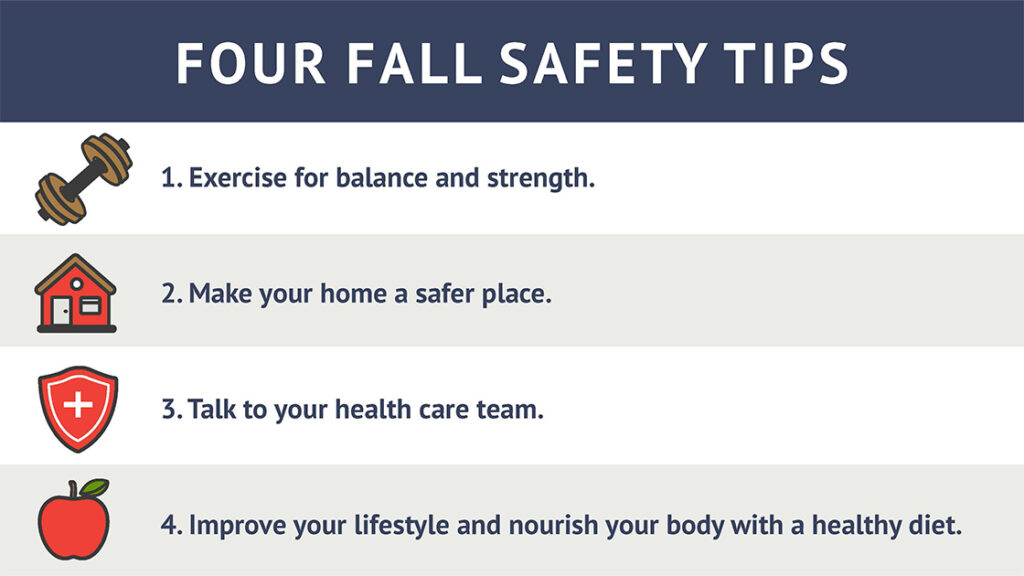
Be proactive and protect yourself. Don’t wait for a nasty fall to happen to you. Start your fall prevention plan today.
DID YOU ENJOY WHAT YOU JUST READ?
Join our exclusive community and subscribe now for the latest news delivered straight to your inbox. By clicking Subscribe, you confirm that you agree to our terms and conditions.
Jordan Oaks‘ Senior living designed for better aging
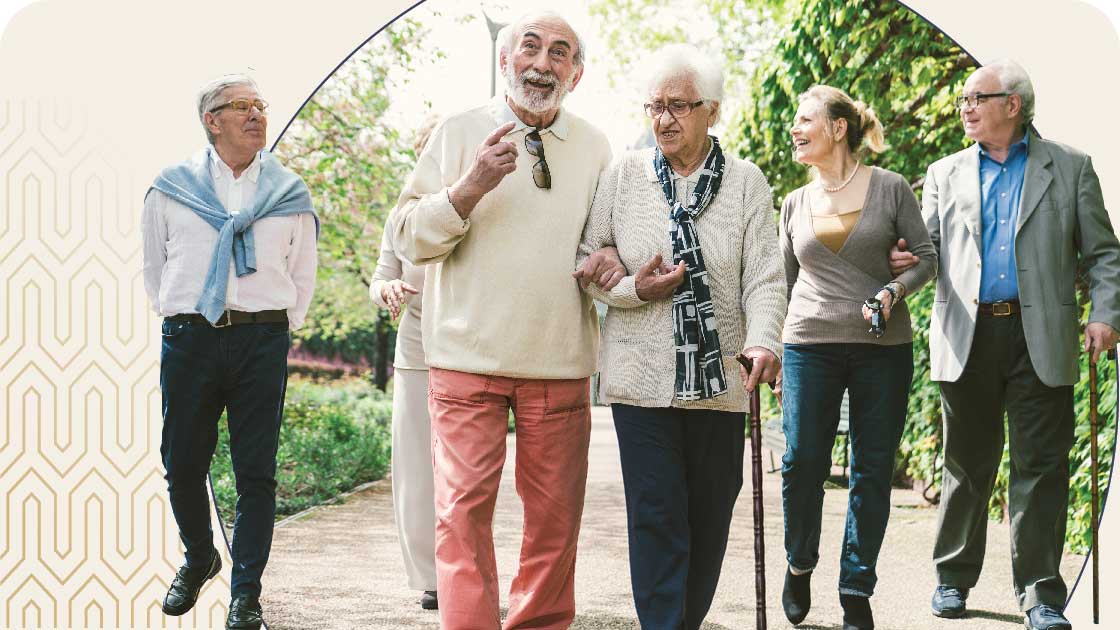
Experience your best choice for senior living in Cary, North Carolina. With our all-inclusive monthly rate, you’ll enjoy an active, secure, independent lifestyle; friendly hospitality; and a social circle second to none. You’ll feel safe, too, with our state-of-the-art communication devices that keep you connected to responsive, trained staff.
The Peaks at Santa Rita has a lifestyle created just for you

Discover touches of luxury senior living in Green Valley, Arizona. Not only will you live in a beautiful apartment with a full kitchen complete with granite countertops and your own washer and dryer, you’ll have plenty of opportunities to stay active and increase mobility.
Whether it’s a morning swim in the pool or a new fitness class in the gym, we prioritize your safety and wellness through thoughtful community design and resident-focused initiatives.


Frequently Asked Questions:
What are the main causes of falls in older adults?
The most common causes of falls include body weakness, home hazards (like clutter or poor lighting), medical conditions, side effects from medications (both prescription and over-the-counter), and unhealthy habits such as inactivity.
How can I reduce my risk of falling at home?
You can lower your risk by making simple changes such as keeping frequently used items within easy reach, improving lighting, removing tripping hazards like loose rugs and clutter, installing grab bars and handrails, and using nonslip mats and rugs throughout the home.
What types of exercises help prevent falls?
Exercises that improve strength, balance, coordination and flexibility are highly effective. Recommended activities include tai chi, yoga (including chair yoga) and walking. Always consult your health care provider before starting a new exercise program to ensure it’s safe for you.
FIND YOUR COMMUNITY
Related Articles
STORIES, INSIGHTS & RESOURCES
As you and your loved ones navigate the exciting opportunities retirement presents, thoughtful planning is key. Stay informed with empowering articles for seniors covering health, lifestyle, finance and more.

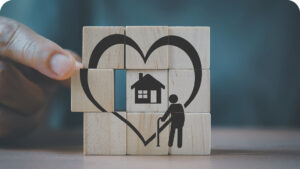
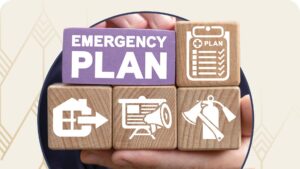

Chronicles Of The Heart
RESIDENTS SAY INDEPENDENCE IS A TOP PRIORITY
Below, residents explain how much they appreciate the freedom they experience at our independent living community. It’s empowering to continue to make your own decisions, and you’re free to create your day around your personal interests.

